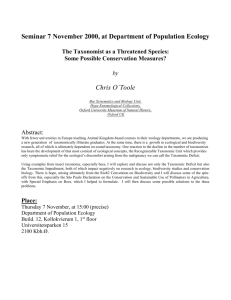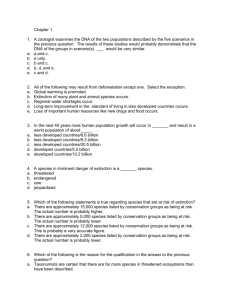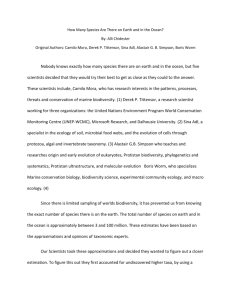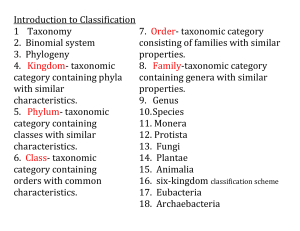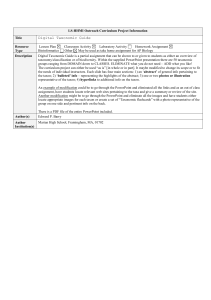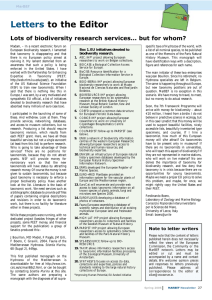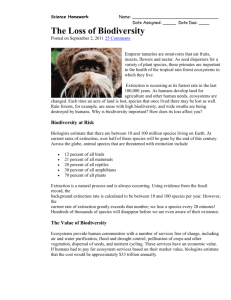File - rajni eportfolio
advertisement
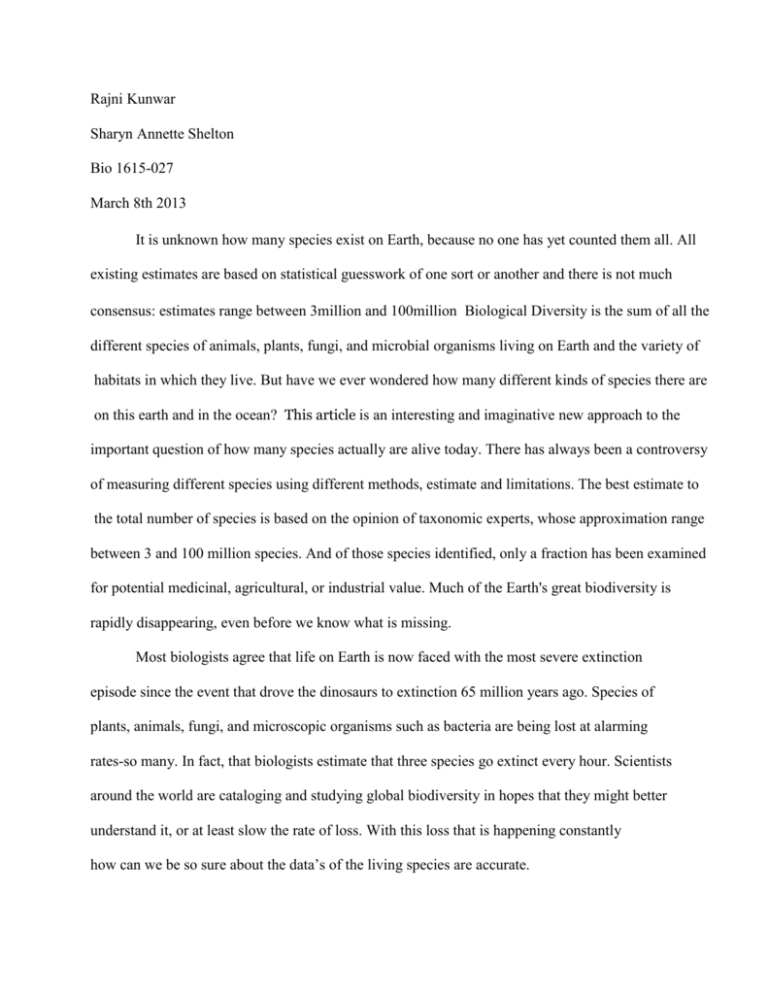
Rajni Kunwar Sharyn Annette Shelton Bio 1615-027 March 8th 2013 It is unknown how many species exist on Earth, because no one has yet counted them all. All existing estimates are based on statistical guesswork of one sort or another and there is not much consensus: estimates range between 3million and 100million Biological Diversity is the sum of all the different species of animals, plants, fungi, and microbial organisms living on Earth and the variety of habitats in which they live. But have we ever wondered how many different kinds of species there are on this earth and in the ocean? This article is an interesting and imaginative new approach to the important question of how many species actually are alive today. There has always been a controversy of measuring different species using different methods, estimate and limitations. The best estimate to the total number of species is based on the opinion of taxonomic experts, whose approximation range between 3 and 100 million species. And of those species identified, only a fraction has been examined for potential medicinal, agricultural, or industrial value. Much of the Earth's great biodiversity is rapidly disappearing, even before we know what is missing. Most biologists agree that life on Earth is now faced with the most severe extinction episode since the event that drove the dinosaurs to extinction 65 million years ago. Species of plants, animals, fungi, and microscopic organisms such as bacteria are being lost at alarming rates-so many. In fact, that biologists estimate that three species go extinct every hour. Scientists around the world are cataloging and studying global biodiversity in hopes that they might better understand it, or at least slow the rate of loss. With this loss that is happening constantly how can we be so sure about the data’s of the living species are accurate. Methods The methods of the authors essentially consisted of three parts. First, the authors compiled a list of approximately 1.2 million species pulled from numerous biological databases. Second, they surveyed a little over 500 taxonomists who were asked to identify the validity of current scientific names and comment on the intensity of current taxonomic efforts to describe new species. Third, the authors analyzed this data to find the estimated global numbers of biological taxa for each phylum. This seeks to predict total global biological diversity by documenting current taxonomic numbers and extrapolating consistent patterns to estimate the number of species that have yet to be identified. So the number arrived at by the researchers almost certainly underestimates the planet's true biological diversity. The method produced some rather curious results, too: it predicts, for instance, that there are over 200 times as many animal species as protozoan ones, which may strike ecologists as rather odd. Conclusion For the new estimate, the scientists came up with a method of their own, based on how taxonomists classify species. Each species belongs to a larger group called a genus, which belongs to a larger group called a family, and so on. We humans, for example, belong to the class of mammals, along with about 5,500 other species. Work cited : Mora C, Tittensor DP, Adl S, Simpson AGB, Worm B (2011) How Many Species Are There on Earth and in the Ocean? PLoS Biol 9(8): e1001127.doi:10.1371/journal.pbio.1001127, Apr. 04, 13
